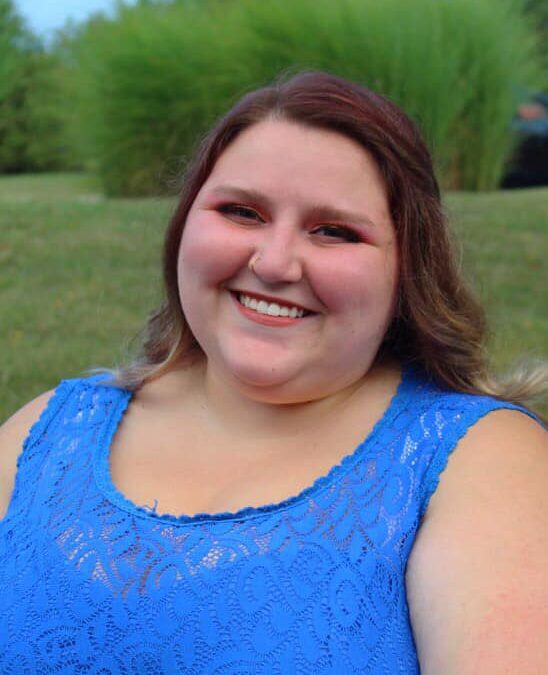Coined by Black scholar and civil rights activist Kimberlé Crenshaw in her 1989 work, “Demarginalizing the Intersection of Race and Sex: A Black Feminist Critique of Antidiscrimination Doctrine, Feminist Theory and Antiracist Politics”, the term intersectionality refers to the multiple dimensions of discrimination faced by those with multiple marginalized identities. In other words, intersectionality is how the aspects of an individual’s identity come together to form a unique experience with life and the system of oppressions operating within it, i.e. racism, homophobia, sexism, ableism, transphobia, religious discrimination, and socioeconomic oppression, to name a few.
Intersectionality allows us to give voice to those who are typically unheard, and to consider those folks in our activism. But, intersectionality also influences daily life experiences, and should be considered in more than just activist spaces.
Recently, my graduate class on identity and stigma found ourselves discussing intersectionality while doing an activity in which we had to “draw our identity” on a piece of paper. When it came time to share our creations with the class, I noticed that most of my classmates had drawn some form of octopus-shaped mind map, with their names in the middle and a few key words jutting off the center circle, like “parent,” “student,” and “athlete.” I remember looking down at my paper in this moment, on which I had illustrated the top of a head and a thought bubble with a bunch of haphazardly written words like “Queer,” “Disabled,” and “Jewish,” accompanied by doodles of a sign language “I love you” hand and the 3E Love wheelchair heart and thinking I had missed the brief on the assignment.
I hadn’t though – those were the simply aspects of my identity that I felt were important.
I experienced the concepts differently from my classmates because of my knowledge and experiences with pride and with discrimination. While most of my classmates were considering identities that showed their similarities with other folks, while my first instincts were to share what made me unique. I considered my intersectionality in the activity.
Consider your own intersectionality: Think of your race, gender, religion, sexuality, physical appearance, and ability. Ask yourself, ‘Who am I?’ and ‘How do my identities intersect?’
I am white. I am nonbinary. I am Jewish. I am queer. I am fat. I am disabled and hard of hearing. Some of my identities lend themselves to privilege, and some to oppression or discrimination.
When I first became a wheelchair user, I experienced an identity shift not unlike the one that occurred when I first came out as queer. Everything in my life suddenly became disability and accessibility focused as I navigated many doctors’ appointments and experienced the successes and complications that can come with life on wheels. But, just because disability was now at the forefront of my identity did not mean I wasn’t still experiencing life as someone with my other identities. My identity as a disabled person is blended. It is intersectional, not separate from my queerness or my Jewish identity.
Identities do not operate separately from each other. All of a person’s life experiences are influenced by them. Intersectionality allows us to acknowledge that. My experience in everything from higher education to buying a house to receiving medical care as a disabled, fat, queer wheelchair user is will be different of a Black able bodied woman, or an Asian Deaf transgender person, or even another disabled queer wheelchair user.
Identity is not static, it is fluid. While a person may be able to shift one of their identities the forefront in a given situation, all of their identities make up the person they are and contribute to how they experience the world.
A disabled individual’s identity as disabled does not always have to exist at the forefront of their identity. Disabled people are queer, straight, Black, white, Indigenous, Asian, multiracial, Jewish, Christian, Muslim, thin, fat, cisgender, transgender, rich, poor, middle class, and much more. Disabilities can be visible or invisible, and disability does not discriminate. Intersectionality gives us as activists and advocates leverage to understand how these identities intersect and coexist, and how it all must be taken into account in efforts toward true diversity and inclusion, or the movement is not truly inclusive.
July is Disability Pride Month, but I am proud year-round to have a disability. June is LGBTQIA+ Pride Month, but I am proud year-round of my gender and sexuality. I am proud to be who I am, and to have the identities that I hold. In the end, intersectionality is a crucial aspect of understanding identity and discrimination. If we fail to acknowledge our own and other’s intersectional identities in our everyday lives, our advocacy and diversity practices will never be truly inclusive.
The author: Karli Jayne Miller (they/them), 26, is an Allentown native with a recent Master’s Degree in Communication Studies from West Chester University of PA. Inquisitive by nature and an avid conversationalist, Karli studies body politics, disability culture, LGBTQ+ activism, and inclusion. Karli is the current titleholder of the Ms. Wheelchair Pennsylvania 2020 title, and in their spare time, they enjoy spending time with their pets, collecting mini figures, and catching up on the latest shows on TLC.
Did you like this article? Are there other topics you’d like to see us publish on? Do you want to apply to be a guest blogger? Please take our quick, 3-question survey and let us know what you think!
Take Survey: http://survey.constantcontact.com/survey/a07eg1rmj5jjrasph9l/start


